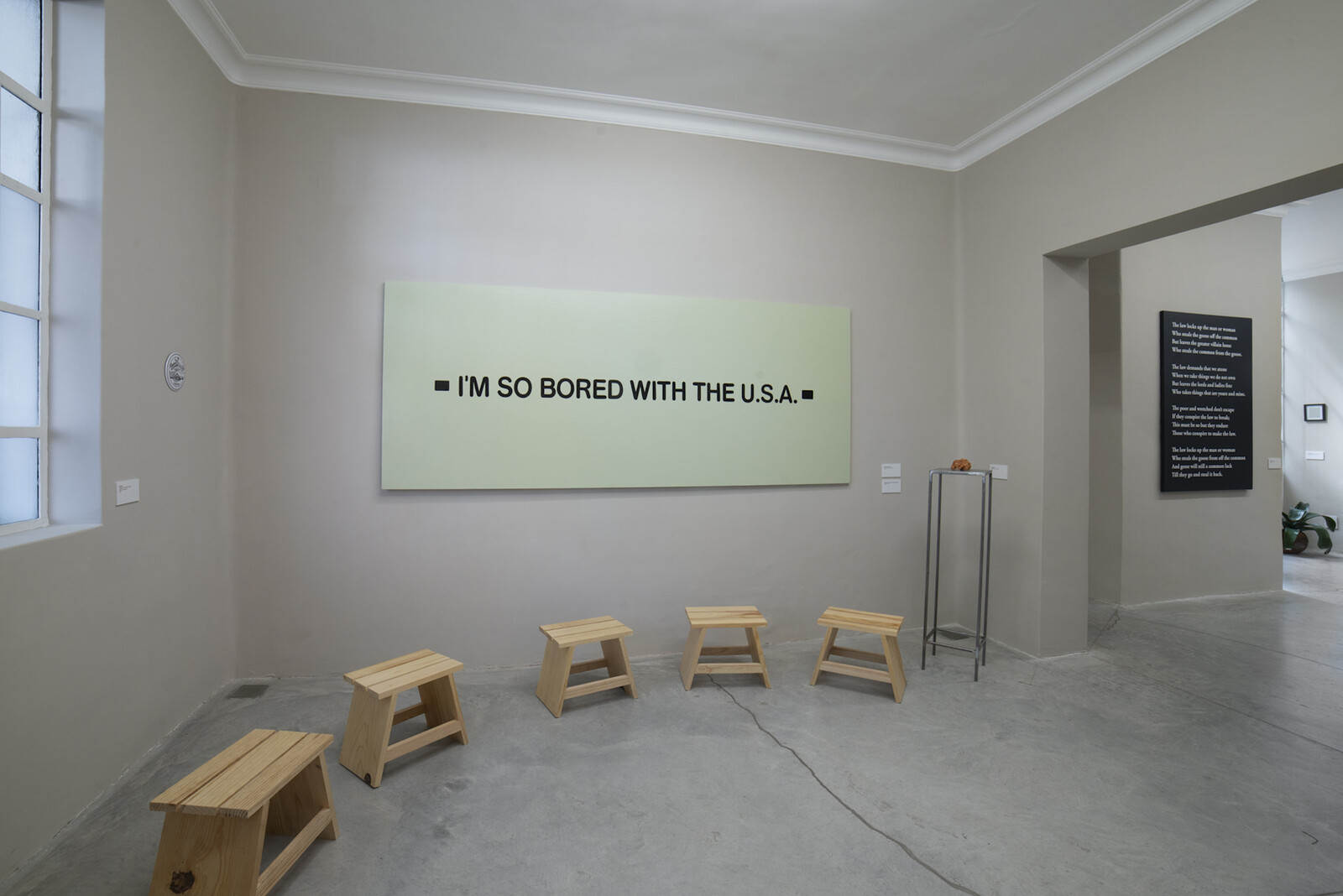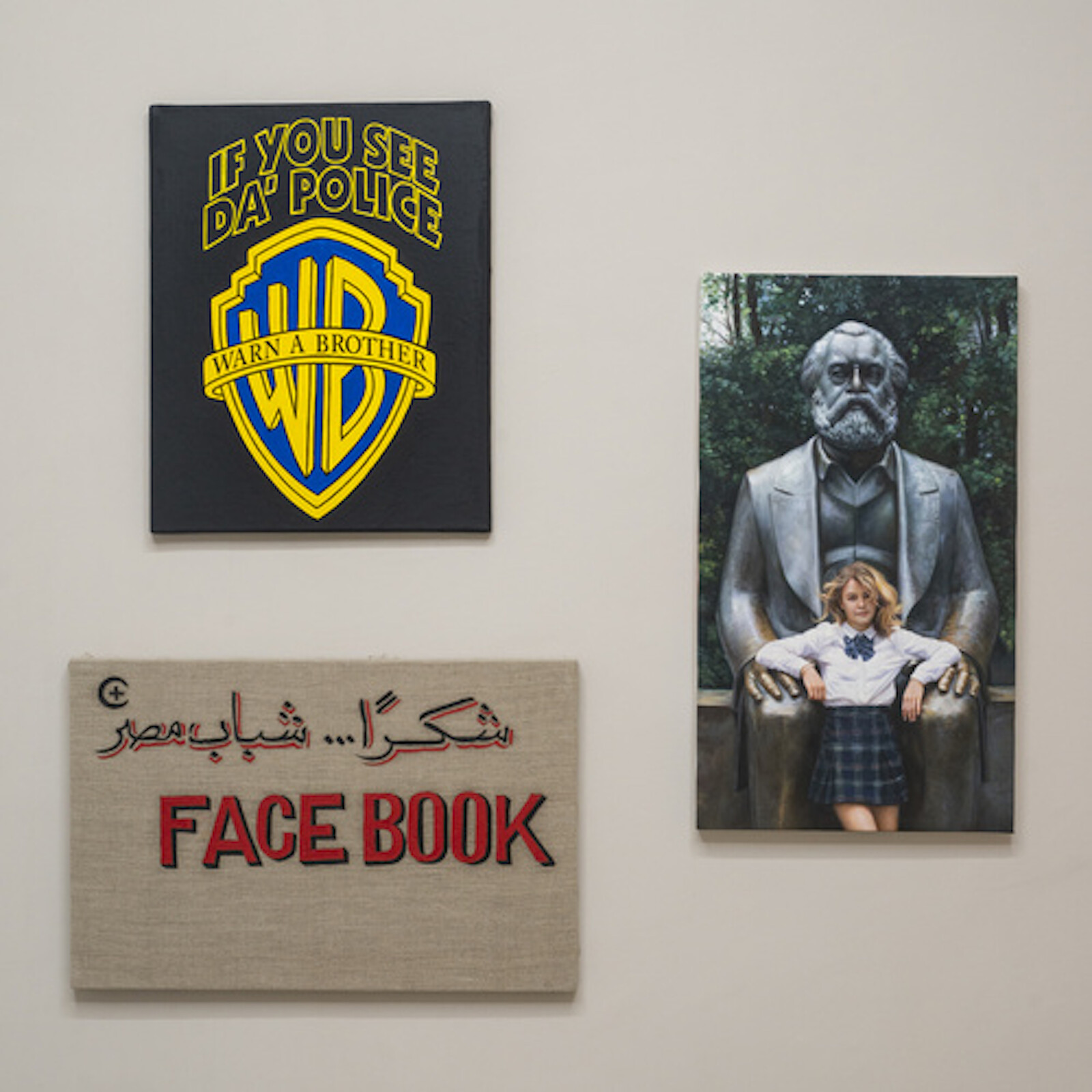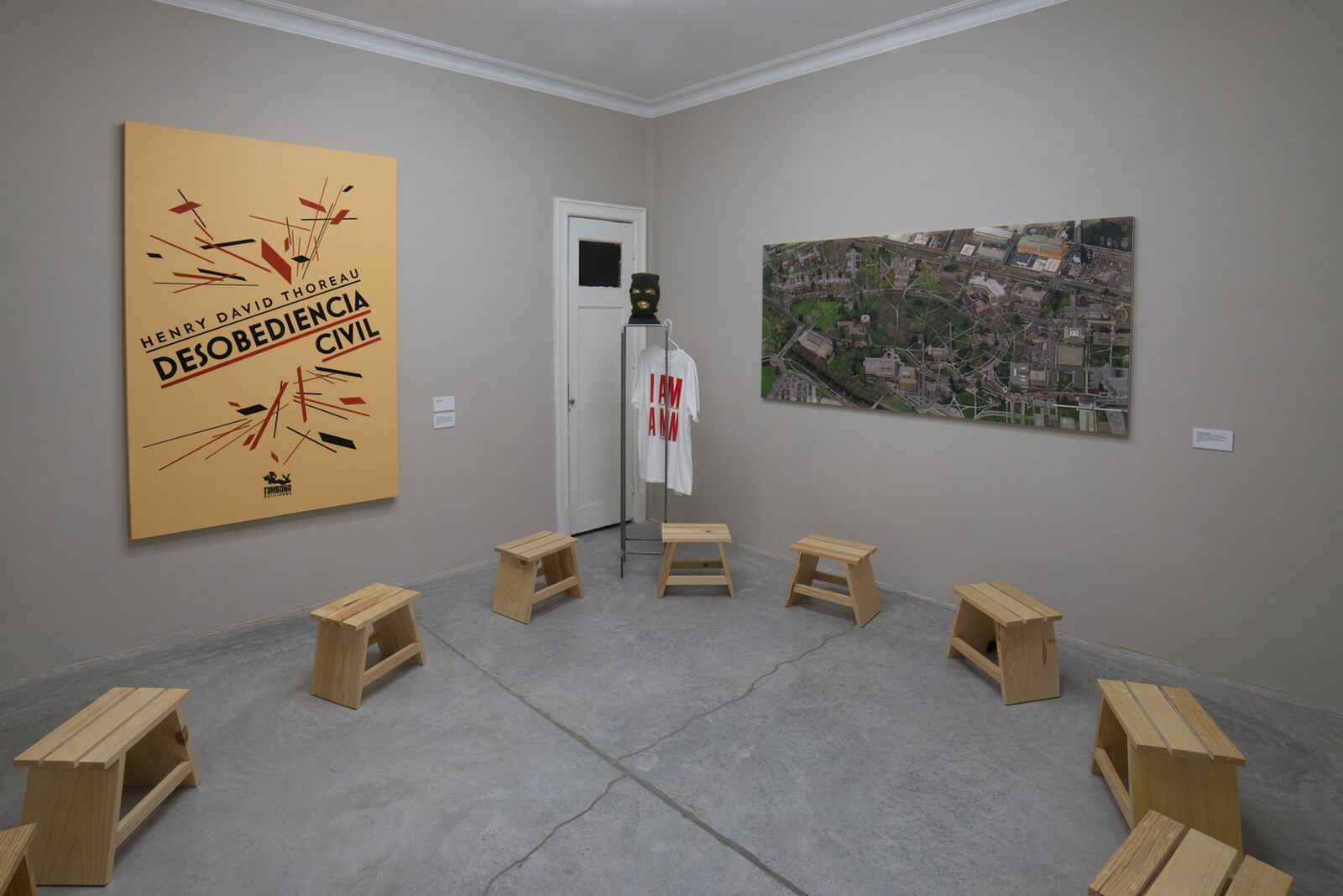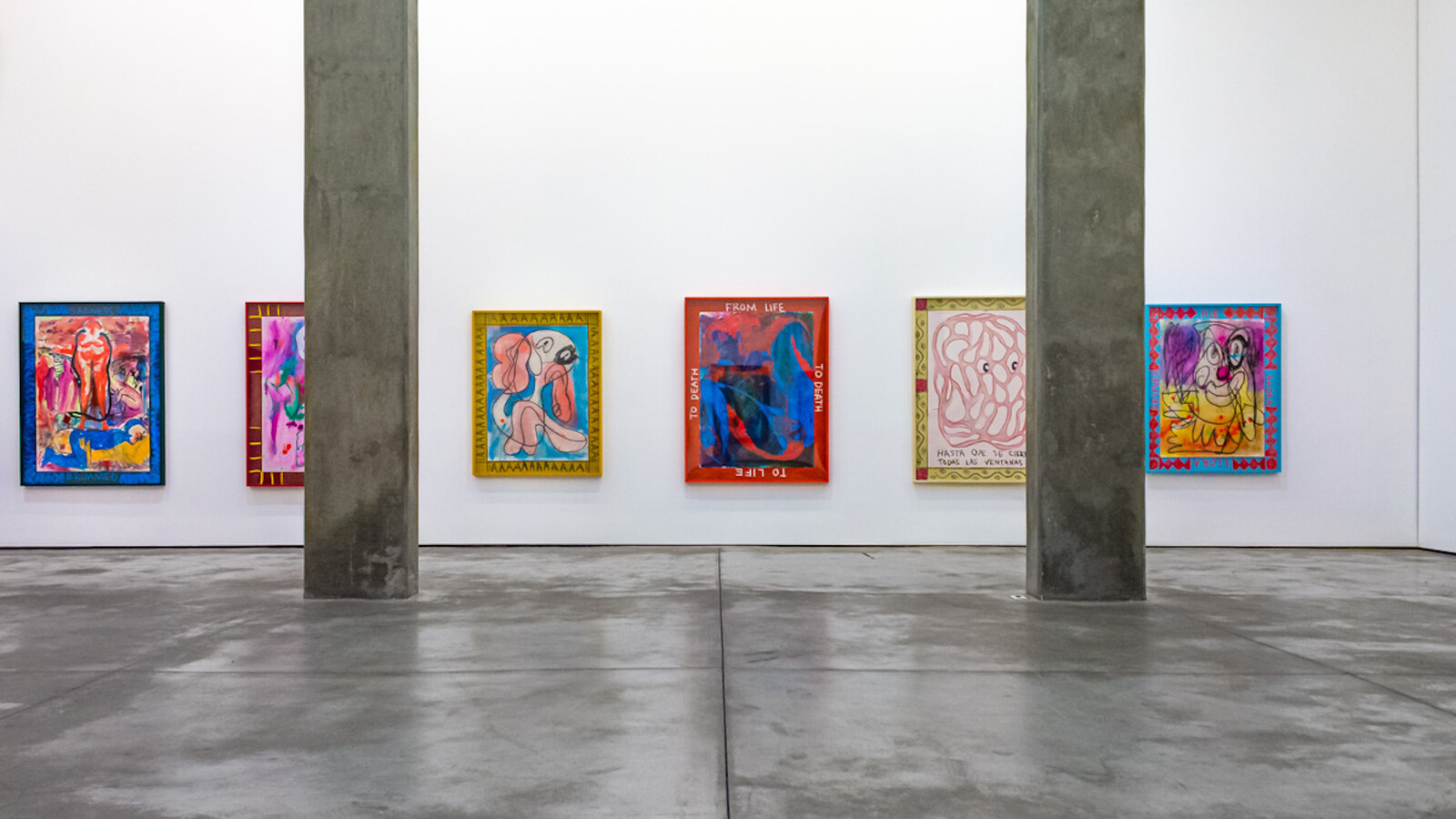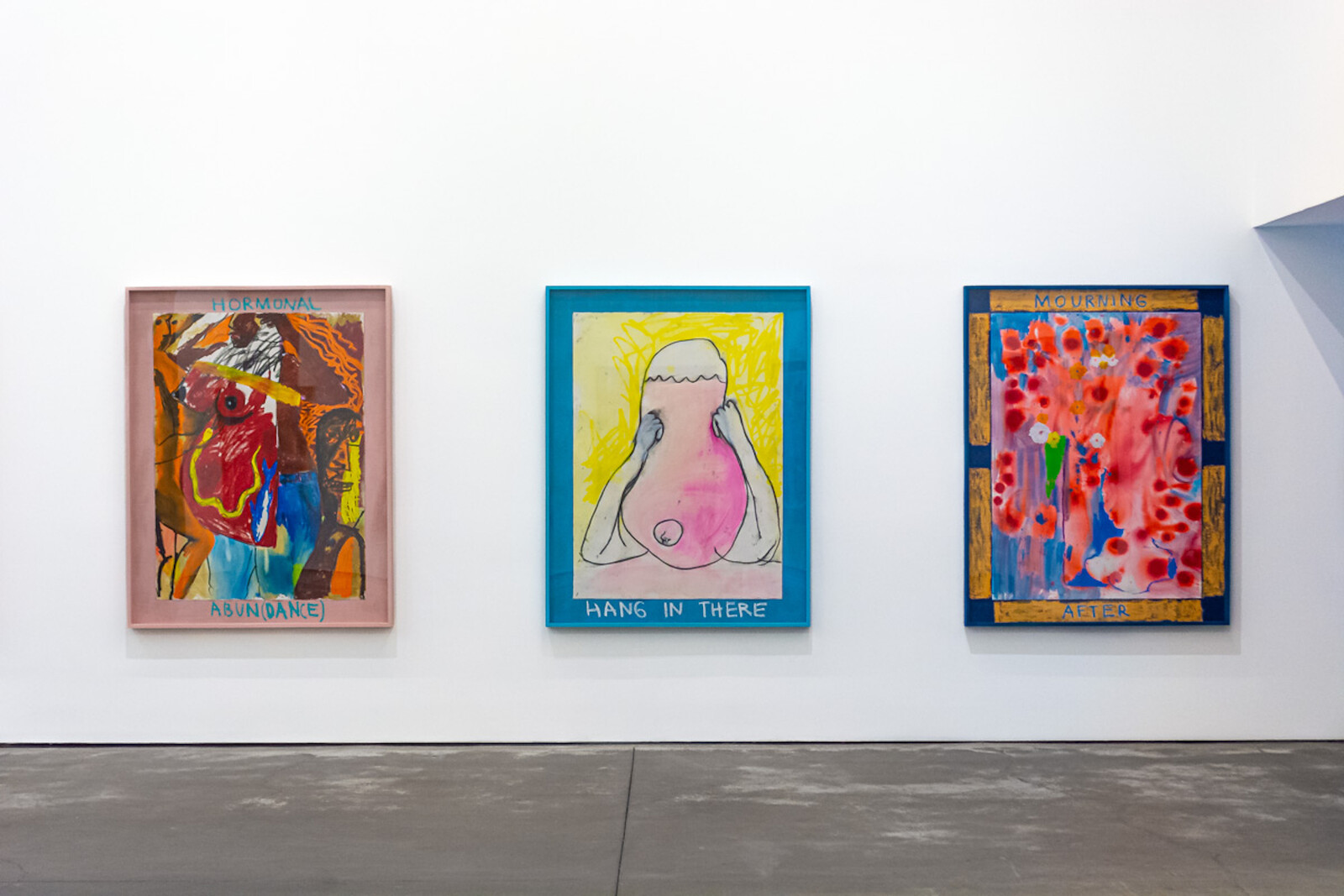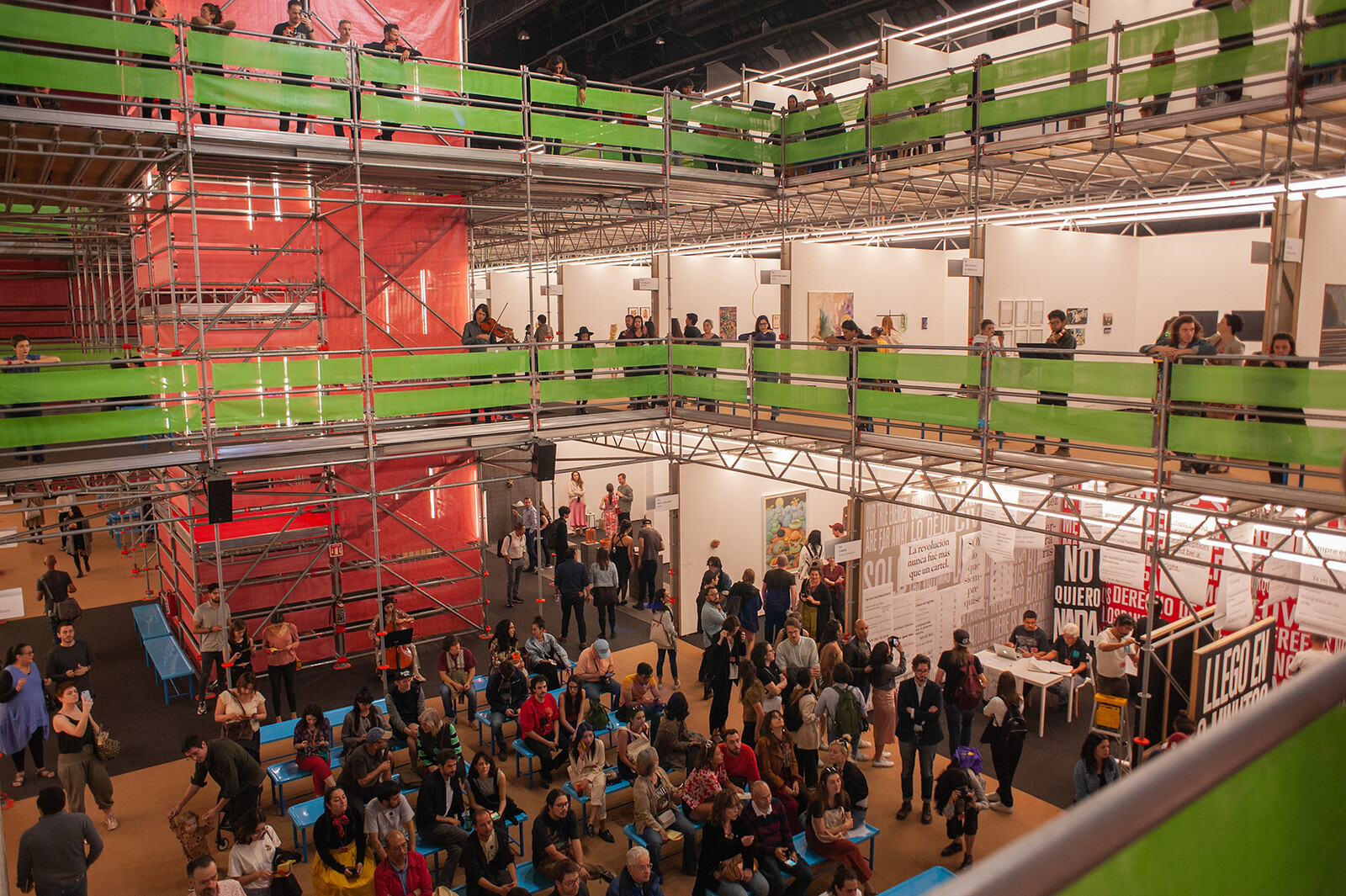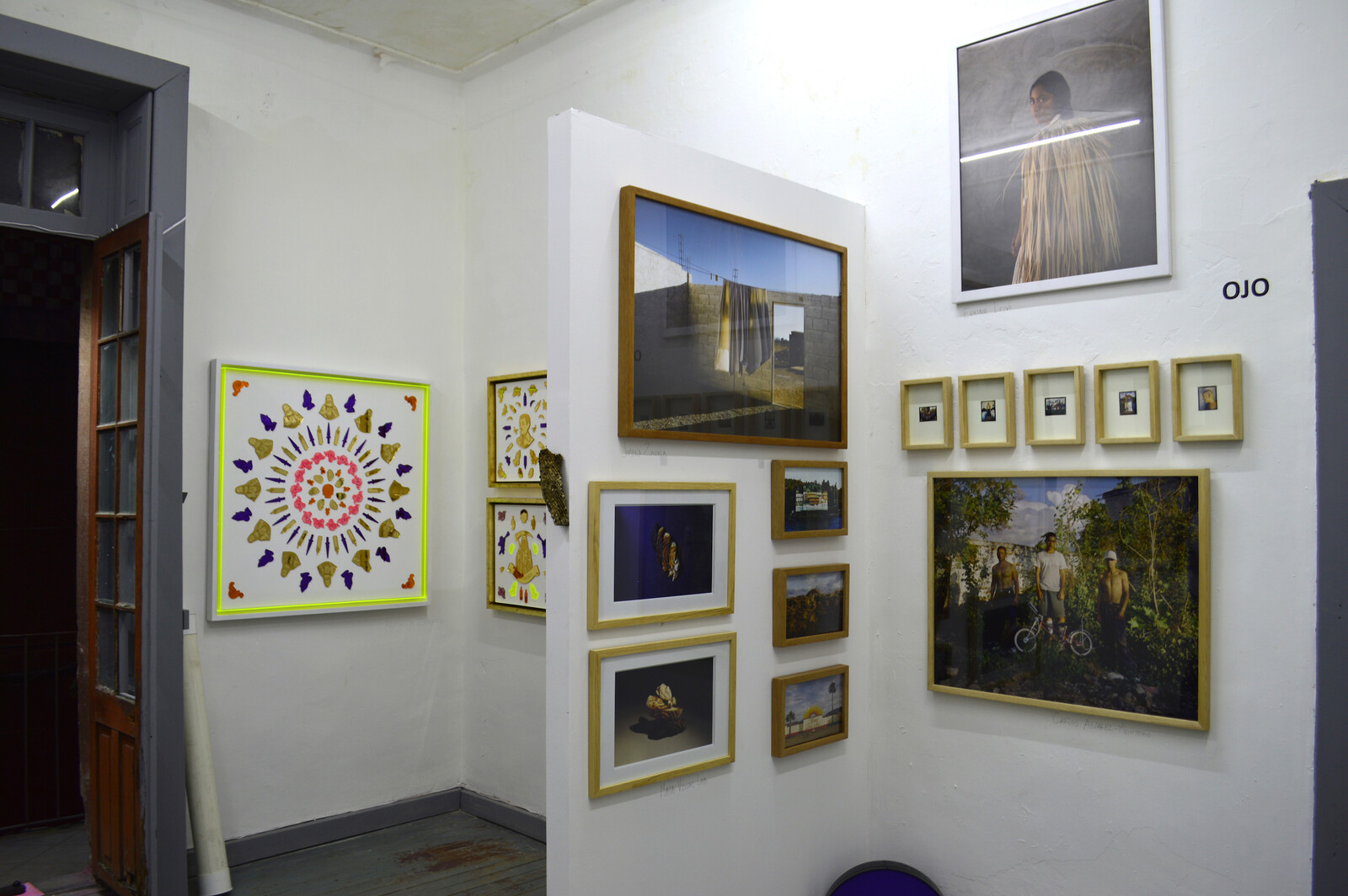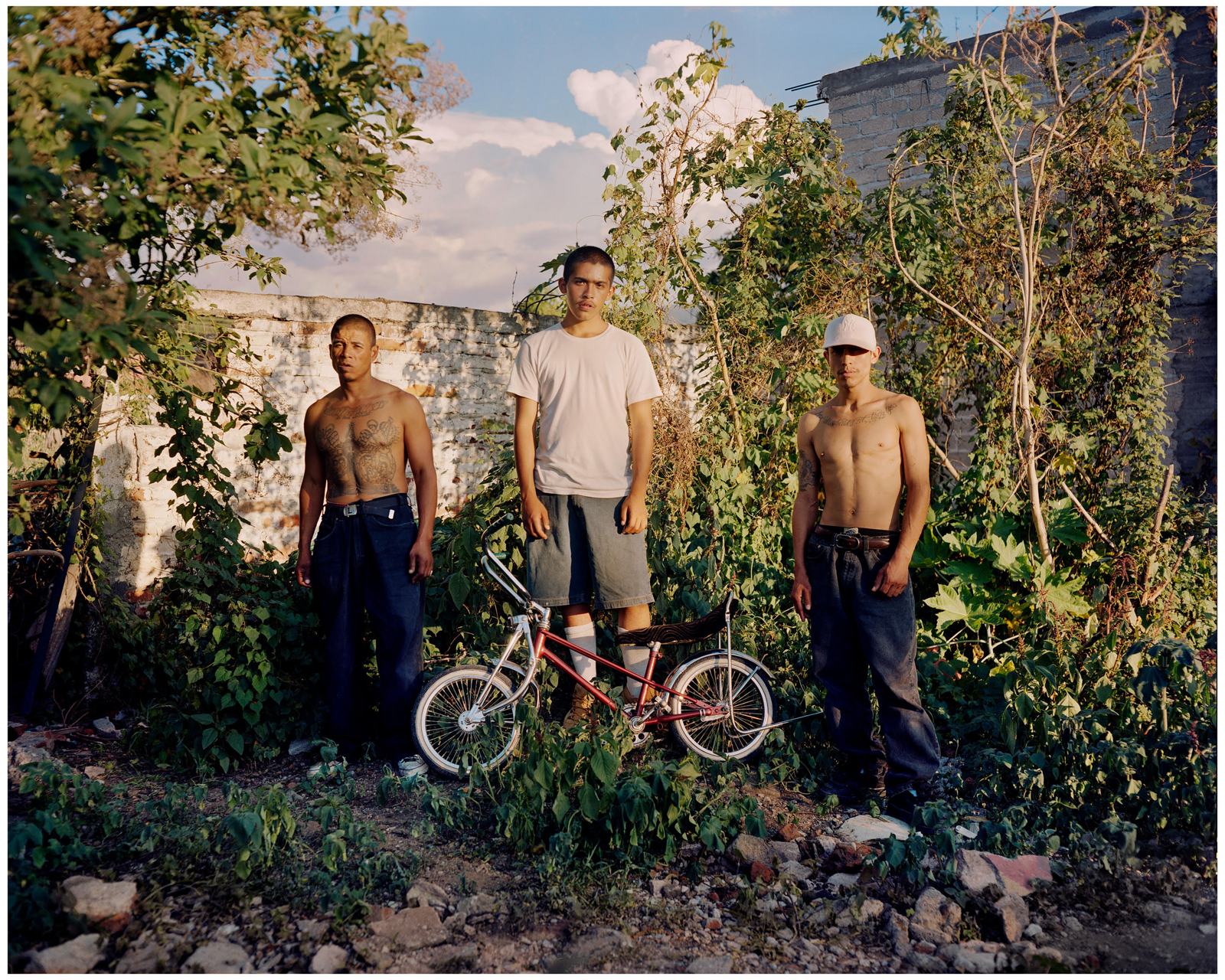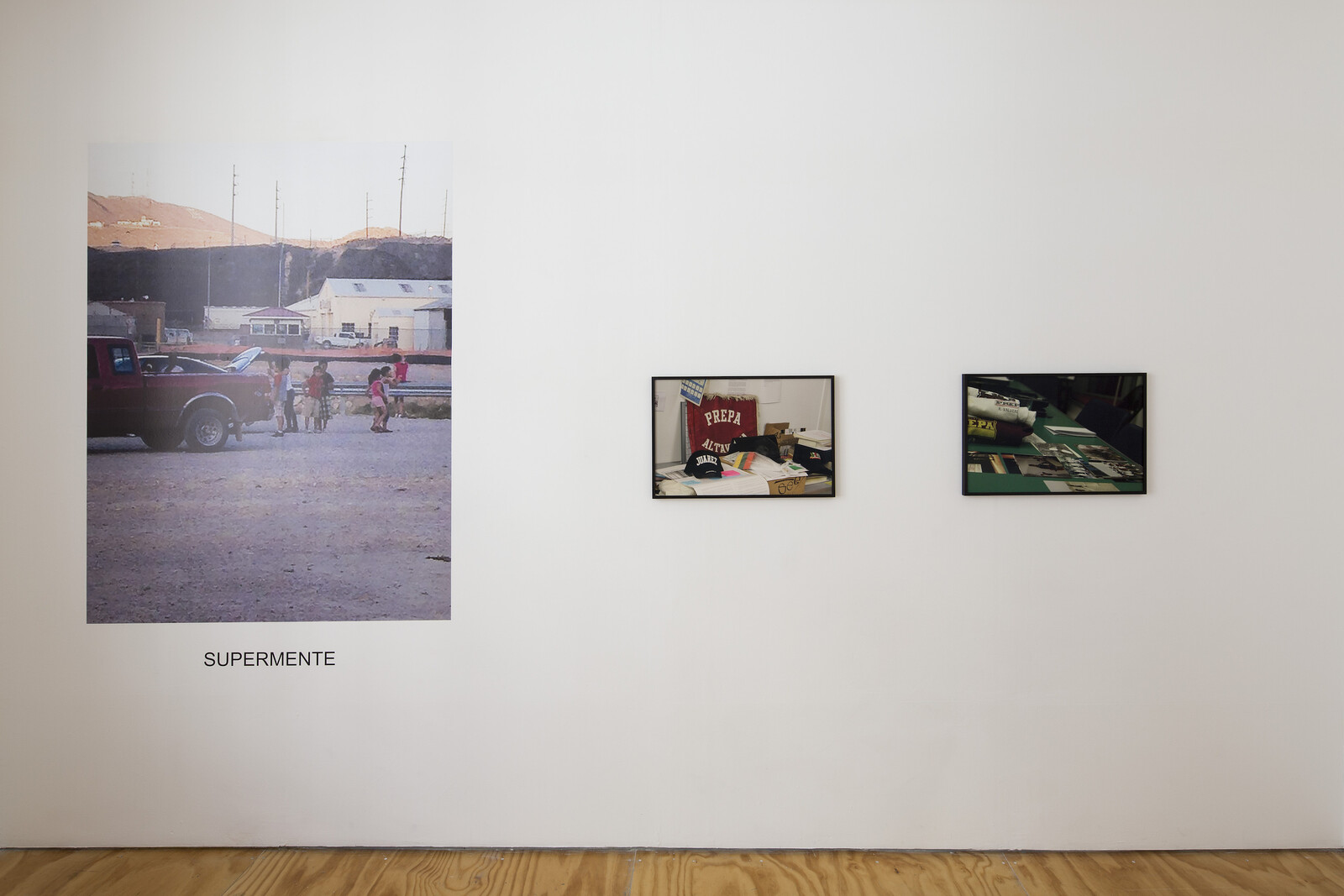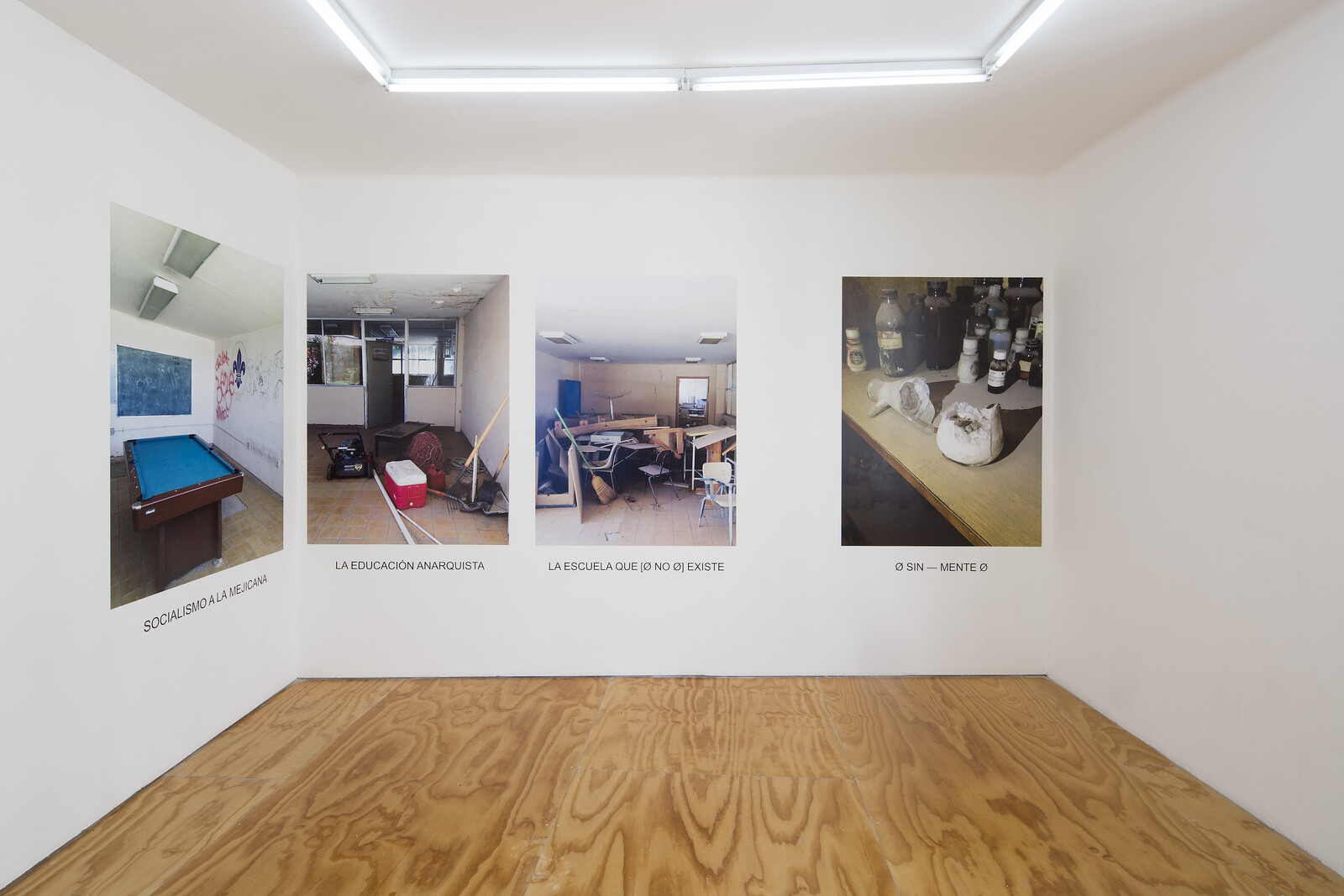The title of Jim Ricks’s painting, I’m So Bored with the U.S.A. (2019)—borrowed from the Clash song—might be taken as a comment on how pervasively Mexico City’s Art Week has, in recent years, been dominated by the country’s relationship with its northern neighbor. This teal-colored canvas, the text of its title painted neatly against the surface in a sans-serif font, hangs at Daniela Elbahara gallery among a collection of the artist’s playful and witty works interrogating the structures of democracy and resistance. “This is What Democracy Looks Like” is the first painting show for the US-born Irish artist, whose conceptual work often incorporates sculpture and performance. The exhibition uses humor to lay bare the absurdity and hypocrisy of US politics, and to question the amount of attention paid to the country by the rest of the world.
Perhaps partly in anticipation of the cancellation of Art Basel Hong Kong, a surplus of American and European dealers and collectors were present during this major week of art fairs, gallery openings, and museum exhibitions. Pia Camil’s exhibition “Ríe ahora, llora después” [Laugh Now, Cry Later] was particularly popular with both visitors and locals. For her second solo show at Galería OMR, the Mexican artist showcased a suite of large-scale drawings—often featuring female figures and ghoulish faces—made with acrylic ink, oil pastel, and watercolor. These tableaux are droll, expressive, and overtly autobiographical. One piece features a long, billowing face, hands over its eyes, chin resting on a table in desperation, with the terse phrase “hang in there” drawn onto the canvas’s edge. In another, a nude female torso is framed by the words “hormone abun(dance).”
Material Art Fair, celebrating its seventh edition at the Frontón México, a Jai Alai arena, felt for the first time a little too ostentatious. BMW, now one of the fair’s major sponsors, proudly displayed its new 2020 M8 Competition coupe in the main lobby, while many blue-chip galleries made their debut appearances. In contrast, Salon Acme, housed in the Juarez district’s iconic dilapidated mansions, remained bewitching in its eighth edition. With its maze-like venue, the fair was able to showcase more intimate works, such as Enrique López Llamas’s ¿Qué es lo que se espera del arte mexicano? [What Is Expected of Mexican Art?] (2020), a text-based artwork made from discarded books about the history of Mexico. The expansive space also lent itself well to the display of monumental pieces, among them Pablo Davila’s But The Subject Is a Long One (2020), a series of neon light rings reproducing a letter by Oscar Wilde. The large-scale chandelier hung prominently from the main courtyard’s ceiling, a luminous display razzing on Wilde’s notion that “art is useless.”
Zona Maco was pleasantly boring, filled with the sellable artworks familiar from previous years. Galerie Lelong & Co. exhibited another of Jaume Plensa’s giant white busts for the fourth consecutive year. One of the few outliers was T.J. Dedeaux-Norris’s “fabric paintings” at Milan gallery Mimmo Scognamiglio Artecontemporanea’s booth: patchwork pieces, including beautifully quilted versions of photographed images, that explore the artist’s African-American and French-Creole identity. Dedeaux-Norris’s work could also be seen at Qipo Art Fair, an initiative run by a collective of curators and artists now in its second year. Qipo was one of the city’s more fun and vibrant fairs, featuring a dance party in one of its galleries on the opening night. Among its notable works was an impressive series by Carlos Álvarez-Montero. A member of the Mexican collective OJO, Álvarez-Montero presented colorful and intimate photographs of young men taken in 2006 in the city of Jacona, Michoacán. Álvarez-Montero’s portraits offer a humane perspective on a city often described as plagued by bloodshed and poverty, focusing on the city’s youth as beacons of hope rather than harbingers of violence.
This year’s Art Week also featured a smattering of new satellite fairs, most notably Feria Maroma in Roma Norte, and La Feria de la Acción, a small experimental fair held in a former flour mill factory in Tacuba. Inside Edificio Humboldt, Centro’s famed art deco building, Lodos Gallery presented Diego Salvador Ríos’s exhibition “Vistas del Arkivo Altavista” [Views from the Altavista Arkive]. In 2014, the Chilango artist visited Preparatoria Altavista, a cooperative federal high school established in the city of Juárez, Chihuahua, in 1967. Ríos, along with the teaching staff, assembled various documents and ephemera associated with the school, including films, photographs, and school banners. The show offers a rare outsider’s perspective on the cooperative high school, reframing its archive as a personal retelling of the institution’s history. Downstairs, in their office space, the art magazine Terremoto presented “Involuntary Archived Theatre of Surveillance,” a project by Miguel Fernández de Castro that presented documents hacked from the Arizona State Police and Border Patrol in 2011. The result is a random selection of images, from family portraits to police crime photos to propaganda postcards to interrogation documents, foregrounding clear evidence of institutional racism.
Rubén Ortiz Torres’s retrospective “Customatism,” at the Museo Universitario Arte Contemporáneo (MUAC), was one of the week’s highlights. The Mexican conceptual artist, who has been working since the 1980s, uses video, sculpture, painting, and performance to disentangle notions of US and Mexican self-definition. At the end of How to Read Macho Mouse (Para Leer Macho Mouse) (1991), an eight-minute video that culls imagery from popular media in both Mexico and the US—most notably Mickey Mouse and Speedy Gonzales—Torres asks, in block letters printed across the screen, “Who is appropriating who?” Taking Tex-Mex as an incongruous example of this hybrid identity, Torres’s work explores—and pokes fun at—both cross-border tensions and cultural exchanges between the nations.
